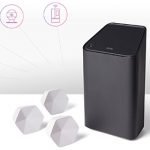
Home security is an increasingly popular broadband home application, and is often available an add-on service from pay TV operators. For example, in January 2019, Comcast introduced Advanced Security as a $5.99/month option to its Xfinity broadband Internet access service. A year later, Comcast made this service free of charge to customers that lease a qualifying Comcast-supplied home gateway.
This feature is being rolled out during the first quarter to more than 18 million eligible Comcast customers. The only requirement is for users to sign on to Internet access through Comcast’s xFi service. xFi also enables users to manage and control smart home devices such as home security cameras, smart speakers, home lighting and thermostats.
Why it matters
Comcast should be praised for its pro-active approach. Its xFi Advanced Security service analyzes home network activity and helps protect in-home devices from cyber-threats. Features of Comcast’s xFi service platform include the monitoring of devices to alert users to anomolous activity and attempts to access home devices by unknown sources.
Left unprotected, home networks and smart home devices often have vulnerabilities that can be exploited by hackers, including access to accounts that in turn can give pirates an avenue to steal end user services and video content.
By contrast, smart home devices and the ecosystems behind them seem to be less secure than their sales pitches make them out to be – as evidenced by the steady stream of reports of personal assistants eavesdropping on conversations and ordering food from Burger King.
On Jauary 13, Consumer Reports announced that it had sent a letter to home security device suppliers, urging them to take more precautions to rise to their promises.












